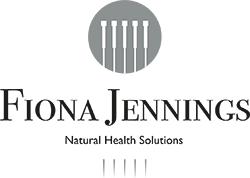-
Q?
What are the different types of acupuncture?
-
A.
Not everyone who says they do acupuncture can offer you all the benefits of traditional acupuncture.
Some healthcare professionals use a reduced form of acupuncture to treat simple conditions. You will only experience the complete system of acupuncture when you see a traditional acupuncturist.For pain treatments I frequently use Dr Tan style acupuncture, which will use points far from the area of pain. For example to treat headaches I may use the knee, for shoulder pain I may use the ankle and calf. However each patient is different, and your treatment plan is individual to you and where exactly you experience pain.
-
Q?
Why use these treatments?
-
A.
The benefits of this natural healing include:
• Effective and safe approach for a wide range of acute and chronic conditions
• Addressing the underlying cause of disease and illness as well as the symptoms
• An holistic approach to disease and illness, treating the body, mind and spirit together.
• Assisting in the prevention of disease and the maintenance of general health and well-being.
• A drug free approach, that nevertheless can be used in conjunction with Western medicine.
-
Q?
What happens in a session?
-
A.
At the first consultation I will ask detailed questions about your condition, your general health and lifestyle. Your pulses on both wrists may be taken, and your tongue examined.
Dependent on your condition, and taking your own preference into account, I may use acupuncture or tuina, or a combination of both. I may also include other therapies such as cupping or moxibustion if appropriate. Each therapy will be discussed and explained to you, and the reasons that I suggest their use.
During most sessions I will also discuss ways in which you can work on your own recovery in between sessions. This may include changes in posture, breathing techniques, gentle exercises or changes in your food or other lifestyle issues. I believe in working with you to agree what are achievable goals.
It is best to wear loose comfortable clothing, so that I can access for example lower legs, knees and arms easily.
-
Q?
What happens during acupuncture?
-
A.
During the treatment, very fine needles are inserted into specific points to balance the body. You may feel a slight sensation or tingling.You will then you will lie and relax on the couch for a period of time Most people report feeling extremely relaxed after a session.
-
Q?
What happens during tuina?
-
A.
Tuina massage is carried out fully clothed, covered by a medical sheet. This protects both of us from the effects of friction. You may be seated,or on the couch. Only a few areas of skin are touched: neck, ankles or hands for example if these need treatment. A warming cream is usually used on these areas.
-
Q?
How many sessions will I need?
-
A.
Since each person is unique, the number of treatments required will vary. Sometimes changes can be felt after only a few visits, while others may require more visits and the effects felt less rapidly. Usually weekly treatment sessions are best at the start. Your treatment plan will be discussed and agreed with you at the first session and kept under review with you.
-
Q?
How long is a session?
-
A.
Each appointment is an hour.
-
Q?
Is it safe?
-
A.
Acupuncture and tuina have a very sound track record. You may sometimes feel tired after a session, and occasionally minor bruising may occur from the needles. However all such reactions are short-lived. All needles are sterile and are never re- used.
Before a treatment you should avoid alcohol, and have a light meal. It is important that you always advise me of any medications that you are taking.
